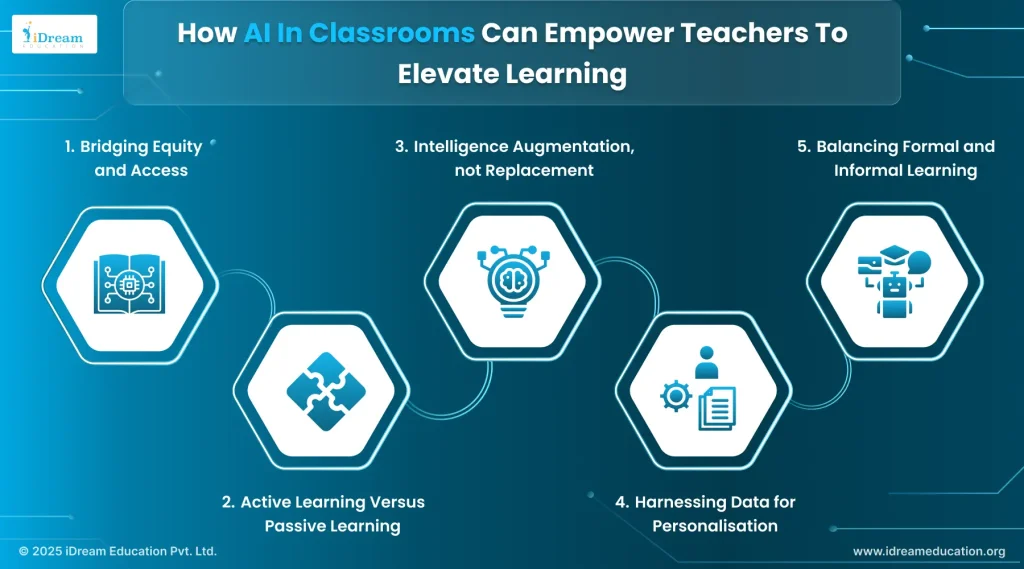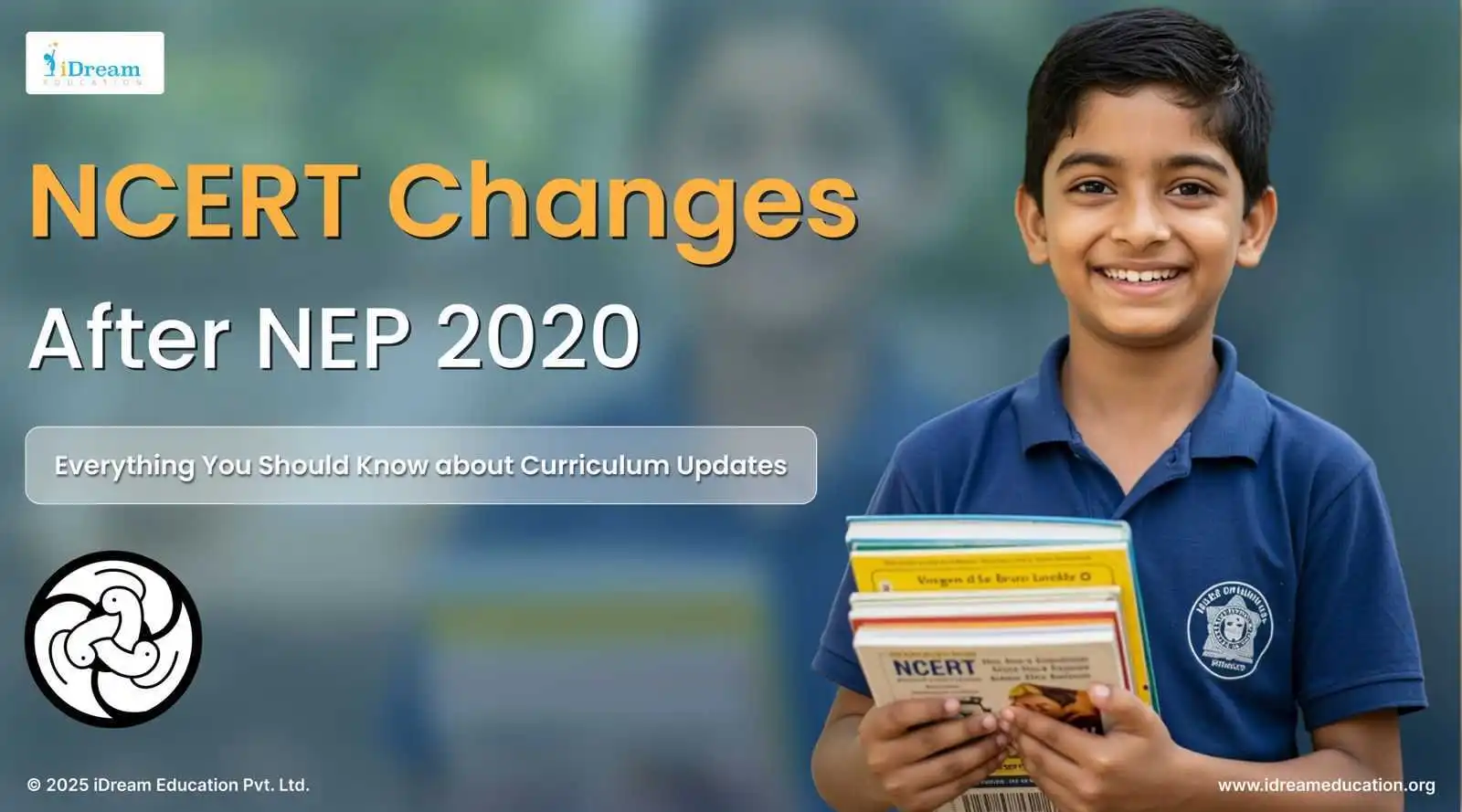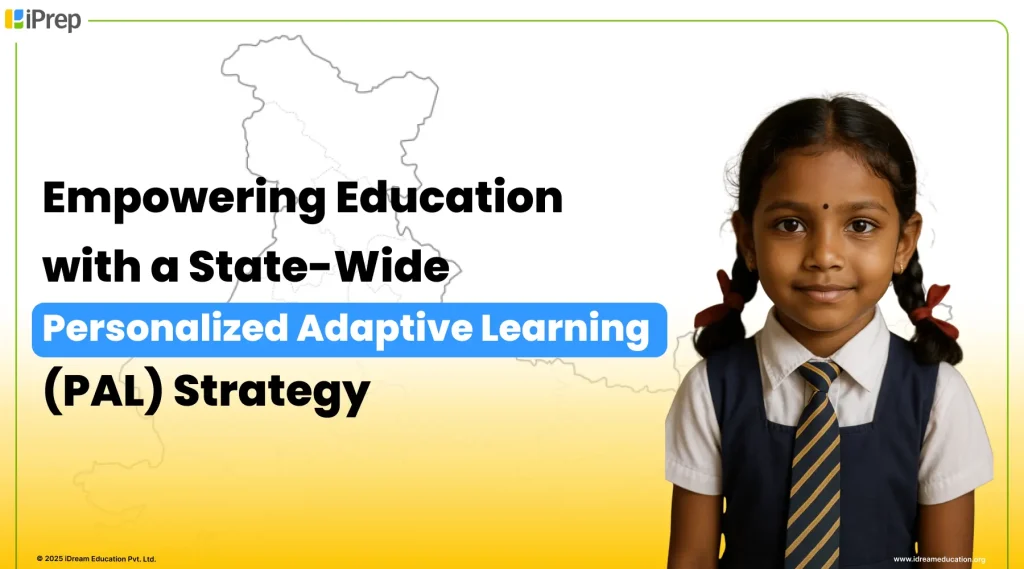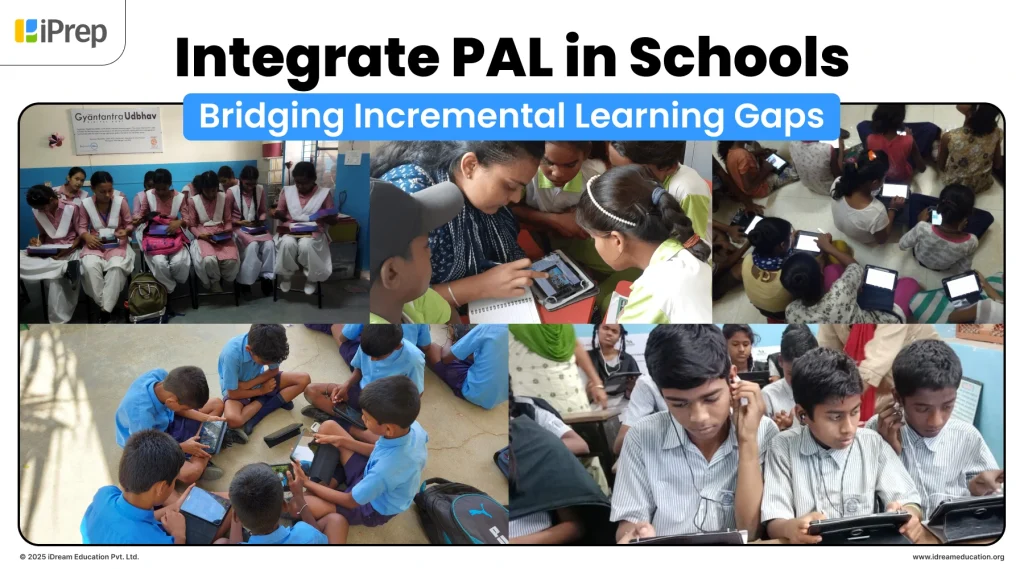
As AI is gaining prominence, there is a growing debate about the role of teachers in the classrooms. Whether the teachers will become irrelevant or what would be the evolved role of a teacher when students will be using AI in the classroom or at home for their personalised learning.
In our view, AI in the classroom is only going to empower the teachers
They can use AI in the classroom to dramatically enhance learning outcomes and their own professional effectiveness when they adapt and integrate these tools thoughtfully. Let’s look at how how AI in classrooms can empower teachers to elevate learning:

Bridging Equity and Access
Today, millions of students face marginalisation due to political, economic, or geographic challenges. In such settings, AI edtech is a vital lifeline, especially where resources are stretched or absent. AI-powered platforms can personalise learning at scale, unlocking the trapped intelligence of motivated students hindered only by circumstances.
However, by leveraging AI in the classroom for individualised curriculum delivery and progress tracking, teachers can better support students who may not thrive in traditional settings. This shift fosters educational equity, making high-quality resources and adaptive learning accessible regardless of physical location or local infrastructure.
Active Learning vs. Passive Learning
A major advantage of AI in the classroom is a shift from passive, lecture-driven instruction to more active learning modalities. AI tools enable and encourage collaborative, interactive, and co-created learning experiences, reflecting the realities of the modern workforce, where collaboration and problem-solving are valued over rote memorisation.
With AI adaptive platforms, students can interact, exchange ideas, and shape their learning, while teachers orchestrate and guide these interactions rather than simply disseminating facts. Teachers who embrace AI-based educational models can enable learners to develop essential skills for their future careers.
Intelligence Augmentation, not Replacement
Contrary to common fears, AI does not replace teachers – it augments them. It relieves burdens of routine tasks and calculations. AI in the classroom is well-suited for knowledge delivery, assessment, and data analysis, while teachers are uniquely qualified for motivation, encouragement, and curriculum design.
This division of labor allows teachers to focus on higher-value activities, such as fostering intrinsic motivation and shaping engaging, context-rich curricula. Effective teachers co-create learning experiences with AI partners, using insights from data analytics to personalise support and interventions.
Harnessing Data for Personalisation
One of AI’s greatest strengths is data-driven personalisation. Digital learning technologies gather granular information on individual students, even in large classrooms. This enables teachers to analyse learning pathways, knowledge states, and behavioural patterns for each learner.
By adapting their support and interventions in response to real-time data, knowing precisely when and how a student needs help, teachers move beyond “one-size-fits-all” education. AI in the classroom empowers teachers to maximise every student’s growth potential, regardless of starting point.
Balancing Formal and Informal Learning
AI tools help bridge formal in-school learning with informal, personalised out-of-school experiences. While society depends on standardised knowledge and values, informal learning facilitated by AI recognises family, culture, regional perspectives, and even specific needs of students.
Teachers who embrace both worlds and design for flexibility can help students learn at their own pace and revisit material. This also allows them to supplement schoolwork, enriching their holistic development.
Practical Strategies for Teachers to Use AI in the Classroom
- Teachers can dedicate time to exploring and experimenting with the latest AI tools, attend targeted training sessions, collaborate with colleagues, and share best practices. These efforts not only enhance classroom learning but also contribute to teacher capacity building, as emphasized in NEP 2020.
- By using AI to handle routine administrative work such as grading, attendance tracking, or scheduling. Teachers can free up valuable time to focus on creative lesson planning and deeper student engagement.
- While AI can assist with tasks, teachers remain essential in fostering motivation, emotional intelligence, ethical guidance, and innovative curriculum design. They can focus on skills that technology cannot replace.
- Teachers can leverage AI-powered learning analytics to track student progress in real time, identify learning gaps, and adapt their teaching strategies for more personalized and effective learning outcomes.
- Teachers can design learning experiences where AI-powered activities complement and extend classroom teaching.
- Teachers should advocate for the ethical use of AI, ensuring that student data privacy is protected, learning remains equitable, and all students benefit inclusively from technology-enhanced education.
Key Challenges and Considerations for Using AI in the Classroom
- Balance Technology with Human Insight: Avoid over-reliance on AI, ensure that technology enhances teaching without diminishing the crucial role of teachers themselves.
- Address Algorithmic Bias: Critically evaluate AI tools being enabled for classrooms for potential biases. This makes sure that students from diverse backgrounds receive fair and inclusive support.
- Keep Pedagogy Future-Ready: Stay informed about emerging trends in educational technology to ensure teaching methods remain relevant, effective, and adaptable for the future.
Teachers and AI Together can Transform Learning
Integrating AI into classrooms and the broader education system, is not about replacing teachers, but about empowering them. Teachers who adapt AI technology open up richer possibilities for student engagement, equity, and lifelong learning. By combining human insight and digital toolsets, teachers are poised to deliver more personalised, active, and effective education than ever before.
Ultimately, the teacher’s wisdom, creativity, and empathy are irreplaceable. AI is a powerful ally – one that magnifies the teacher’s reach, models best practices, and amplifies impact on every student. With thoughtful adaptation and collaboration, the future of teaching in the age of AI is both bright and profoundly human.













